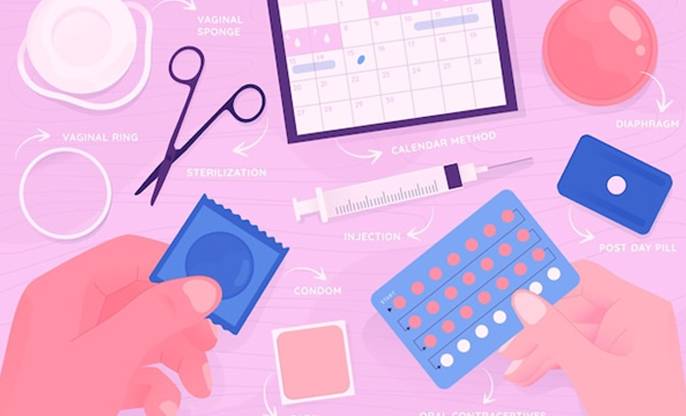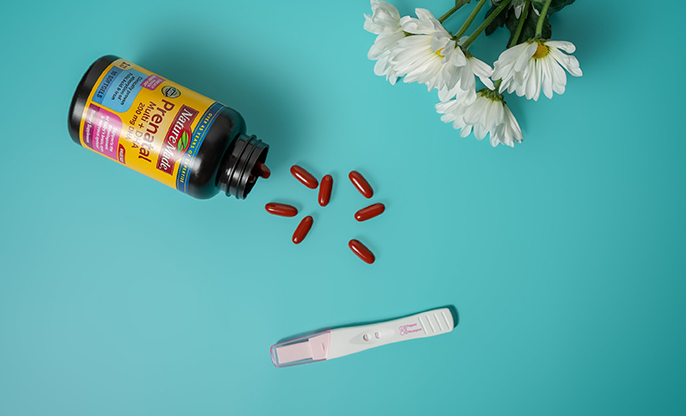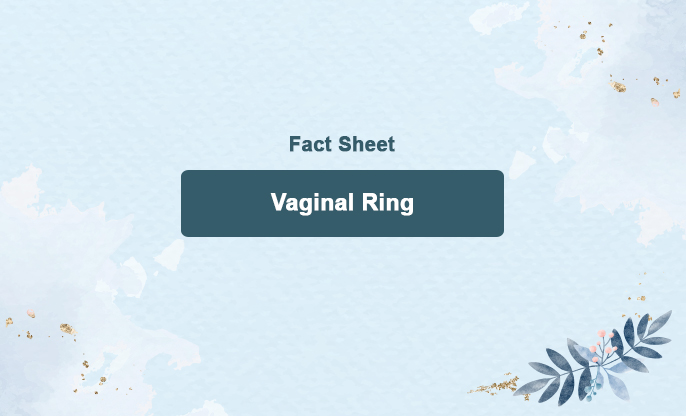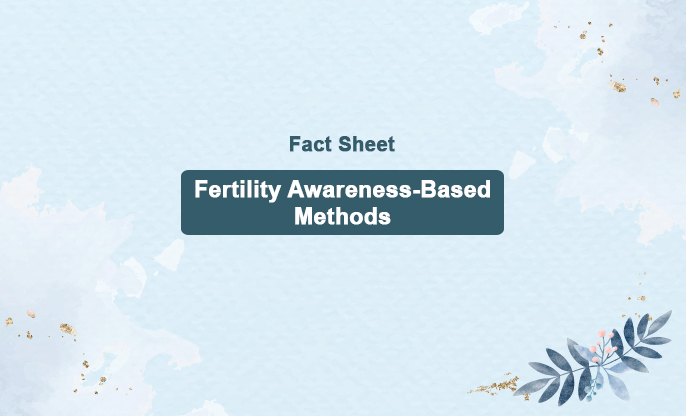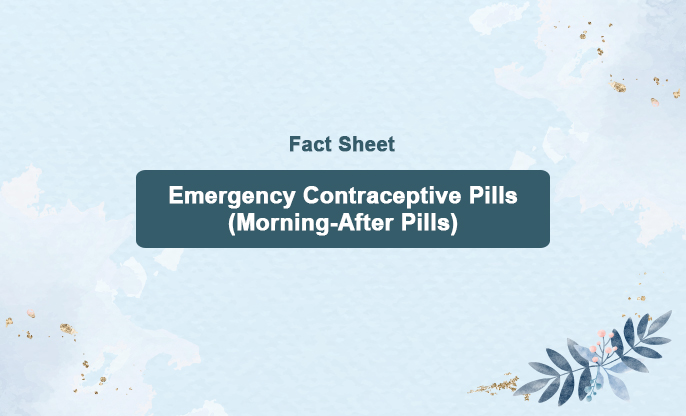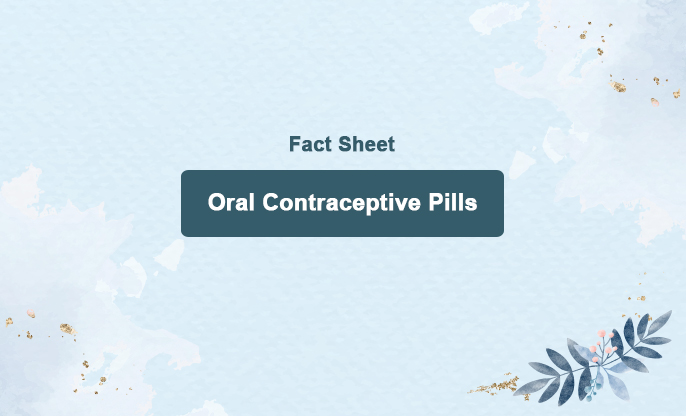
What is this?
Oral contraceptives, commonly known as birth control pills, are hormone-based medications taken orally to prevent pregnancy. They work by inhibiting ovulation and by preventing sperm from passing through the cervix.
Oral contraceptive pills (OCPs) come in two types: combined estrogen-progesterone pills (also known as combined oral contraceptive pills or COCs) and progesterone-only pills (POPs).The most frequently prescribed pill is the combined oral contraceptive (COC) pill. In this pill, progesterone prevents pregnancy, while the estrogen component helps regulate menstrual bleeding.
The effectiveness of oral contraceptive pills (OCPs) depends on how they are used. With perfect use, where the pills are taken consistently and correctly every time, fewer than one woman out of 100 will become pregnant in the first year.
However, with typical use, which includes occasional inconsistencies or incorrect usage, the failure rate increases to 9 women out of 100 becoming pregnant in the first year. Due to human error, the failure rate for combined oral contraceptive (COC) pills is typically around 9%.
While most women take OCPs to prevent pregnancy, 14% use them for non-contraceptive purposes. OCPs can be used to manage various health conditions, particularly menstrual-related disorders such as menstrual pain, irregular menstruation, fibroids, endometriosis-related pain, and menstrual-related migraines.
How does this work?
The primary mechanism of action of oral contraceptive pills is the prevention of ovulation. They inhibit follicular development and prevent ovulation. Progestogen provides negative feedback to the hypothalamus, reducing the pulse frequency of gonadotropin-releasing hormone (GnRH). This, in turn, lowers the secretion of follicle-stimulating hormone (FSH) and decreases luteinizing hormone (LH) levels. Without follicle development, there is no increase in estradiol levels (which are produced by the follicle). The progestogen's negative feedback, combined with the lack of estrogen's positive feedback on LH secretion, prevents the mid-cycle LH surge. As a result, ovulation is prevented since no follicle develops and no LH surge occurs to release the follicle.
Estrogen also helps inhibit follicular development through negative feedback on the anterior pituitary, which slows FSH secretion, although its effect is not as prominent as that of progesterone. Another key mechanism is progesterone's ability to make cervical mucus hostile to sperm, preventing them from penetrating through the cervix and upper genital tract. Additionally, progesterone-induced endometrial atrophy helps deter implantation.
Efficacy:
The effectiveness of OCPs depends on the consistency and correctness of their use:
Perfect Use:
When used consistently and correctly every time, fewer than 1 woman out of 100 will become pregnant in the first year.
Typical Use:
With typical use, which may include occasional inconsistencies or incorrect usage, the failure rate is about 9 women out of 100 becoming pregnant during the first year.
Due to human error, the typical failure rate for combined oral contraceptive (COC) pills is typically around 9%.
Usage duration recommended:
Combined Oral Contraceptive Pills (COCs)
Choice of COC:
Typically contain less than 50 mcg of ethinyl estradiol.
Can be monophasic (same dose in all active pills) or multiphasic (varying doses).
Prescribed as cyclic (monthly bleeding), extended cyclic (bleeding every 3 months), or continuous dosing (no bleeding).
Formulations:
Cyclic: 21-24 days of active pills followed by 4-7 days of hormone-free pills.
Extended Cycle: 3 months of active pills followed by a placebo week.
Continuous Use: Only active pills used for 1 year, stopping all menstrual bleeding. Monophasic pills are easiest to manipulate for this method.
Initiation:
Take at the same time each day.
First-day start: Start on the first day of menses.
Quick start: Start any day; use additional contraception for the first 7 days.
Sunday start: Start on the first Sunday after the period begins; use additional contraception for the first 7 days.
Post-abortion/pregnancy loss: Start within 7 days.
Postpartum: Avoid for the first 21 days due to risk of venous thromboembolism (VTE). Higher risk women should avoid for 42 days. Breastfeeding women should avoid it for 42 days.
Missed Doses:
If a tablet is missed, take it as soon as remembered and the next tablet at the usual time (two pills in one day).
If two tablets are missed in the first or second week, take two tablets the day remembered and two the next day, then resume one per day. Use additional contraception until a new cycle starts.
Emergency Contraception:
Recommended if unprotected intercourse occurs and two or more pills are missed in the first week of the cycle.
Progesterone-Only Pills (POPs)
Choice of POP:
Suitable for women who cannot use estrogen.
Norethindrone (0.35 mg) taken continuously with no hormone-free pills.
Drospirenone (4 mg) includes 24 hormone pills and 4 hormone-free pills.
Initiation:
Take at the same time each day.
If starting more than 5 days from the onset of menses, use backup contraception for the first 48 hours.
Missed Dose:
If missed by more than 3 hours, or if vomiting/severe diarrhea occurs within 3 hours, take the missed pill as soon as remembered and the next pill at the scheduled time. Use additional contraception for 48 hours.
Emergency Contraception:
Recommended for unprotected intercourse within 48 hours of starting POP or missed pills if backup contraception was advised.
Side effects of oral contraceptive pills can include:
Nausea: Feeling sick to your stomach, especially when first starting the pills.
Breast Tenderness: Soreness or swelling of the breasts.
Weight Changes: Some may experience slight weight gain or loss.
Mood Changes: Mood swings, anxiety, or depression.
Headaches: Increased frequency or intensity of headaches or migraines.
Spotting: Light bleeding or spotting between periods.
Decreased Libido: Reduced sexual desire.
Blood Clots: Increased risk of blood clots, which can lead to deep vein thrombosis (DVT), pulmonary embolism, or stroke.
High Blood Pressure: Increased risk of hypertension.
Gastrointestinal Issues: Bloating or changes in appetite.
If you experience severe or persistent side effects, it's important to consult your healthcare provider.

